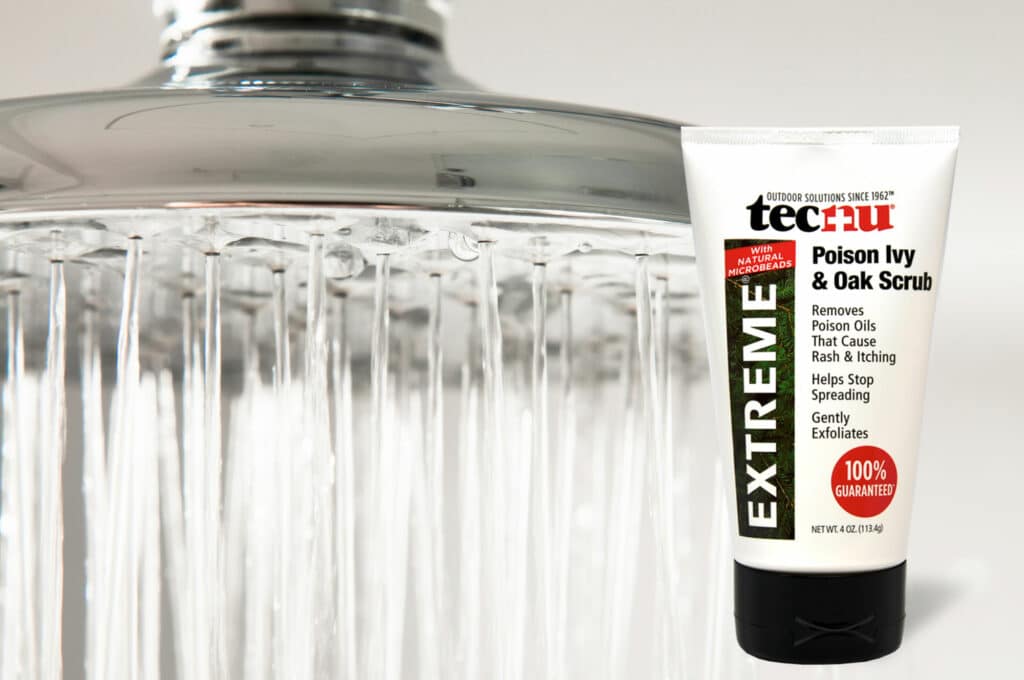Why You Shouldn't Use Hot Water on a Poison Ivy Rash

Poison ivy is a highly widespread plant being found in every state in the continental United States. Equally widespread are the folk remedies and common misconceptions that abound regarding treatment for poison ivy rash. This article will serve to combat one piece of misinformation that still surprises many people who learn about it - that you should never wash a poison ivy rash with hot water.
Why Is Hot Water Bad for a Poison Ivy Rash?
As you may or may not already know, poison ivy rash is caused by your skin's reaction to urushiol, the toxic, waxy oil naturally occurring in every part of the poison ivy plant. Therefore, the only way to develop a rash is direct contact with urushiol on exposed skin.
Therefore, the first thing you should do after realizing that you’ve come in contact with poison ivy is to wash the urushiol off your skin, clothing, and any tools or equipment that’s been in contact with the plant. The sooner you can do so the better, since washing off the urushiol quickly can minimize the ensuing rash, or even prevent it from developing at all.
The key element of this washing process is that it must be done with cold water - although hot water is more pleasant (and is broadly more effective for cleaning surfaces), it also has the effect of opening up the pores in your skin. This in turn makes it easier for urushiol to penetrate your skin and enter your system. Additionally, as the water washes the urushiol off of the initially affected area, it will inevitably flow over other parts of your body. If your pores are open, this can potentially spread the eventual rash across a greater area of skin.
Essentially, the best practice for washing skin after poison ivy exposure is to use cold water paired with either dish soap or rubbing alcohol. The soap and alcohol are effective at breaking down and neutralizing the urushiol, while the cold water will keep your pores closed and less likely to absorb the itchy toxins.
Do’s and Don’ts of Washing Poison Ivy Rash
The short answer to our main question is simple: hot water opens your pores and makes you more likely to experience a more severe or larger rash. However, that isn’t the whole story, and there’s a few other relevant facts that you should keep in mind.
Bath or Shower?
There are a lot of ways to clean urushiol off a body, and some are more valid than others. Depending on where you are when you come in contact with the poison ivy, simply washing the affected area with a garden hose or in cold, running water (such as a stream or creek) can be a perfectly viable choice.
However, if you're close to home, or need to wash a greater area of your body, you may find yourself debating between taking a shower or a bath. Without a doubt, the former choice is the correct one. While soaking in a bath is tempting after the stress of encountering poison ivy, you run the risk that the urushiol will wash off your skin, only to separate and settle on the water’s surface. This can potentially result in the oil spreading over more of your body, or even worse, settling on your mouth, eyes, or genital region, which can have serious side effects.
Is Hot Water Ever Okay?
Even though it’s vital to always use cold, flowing water when initially cleaning urushiol off of skin after first exposure, hot water does have legitimate uses in treating a poison ivy rash later on.
If you develop a rash even after washing off urushiol, hot water can actually be an effective means of combating the itchiness synonymous with poison ivy. This is due to a few different factors.
Firstly, hot water feels good! The intensity provided by the heat acts as a kind of stressor on the skin, producing an effect similar to scratching an itch without the possibility of breaking the skin with a fingernail and risking infection.
Secondly, a poison ivy rash (like any other allergic reaction) is caused by the body releasing the chemical histamine to the affected area as part of your immune response. Heat will stimulate the production of histamine, and although this creates an unpleasant itching in the moment, the heat will eventually deplete the affected cells of their histamine, which can provide up to 8 hours of itch relief afterwards. This can be achieved by aiming warm water at the affected area, and slowly increasing the heat to the maximum tolerable temperature until itching stops.
Find Reliable Itch Relief
While hot water can provide relief for a poison ivy rash, it does have several drawbacks. It will dry out your skin and can easily produce burns which will ultimately produce more problems than hot water solves.
That’s where Tecnu comes in. While hot water and home remedies may work out, they can potentially pose more risk than reward, and ultimately there is no choice that’s more reliable than our line of tried and trusted products for relief from the aggravation of poison ivy rash. With decades of experience, trust Tecnu for all your outdoor wellness needs.




